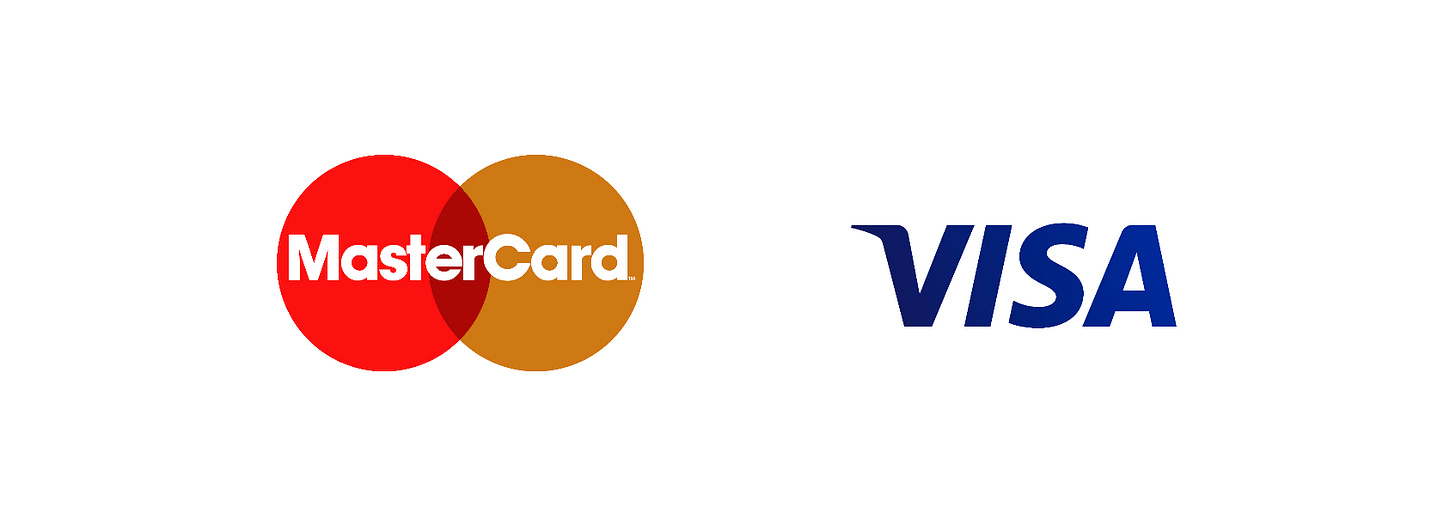Dichotomy #1: Red vs. Blue
An arbitrary war that will never stop raging
Dichotomy
A cutting in two; a division.
Division or distribution of genera into two species.
That phase of the moon in which it appears bisected, or shows only half its disk, as at the quadratures.
Every month, when only half the moon is visible, I publish a favorite dichotomy for my paid subscribers. It's my way of saying thank you for supporting me as a writer.
Introducing, the knife
Conceptual subdivision has been a pastime of philosophers since the days of marble and robes. Before Alien vs. Predator there was materialism vs. idealism, utilitarianism vs. deontology, mind vs. body. Philosophers are obsessed with dichotomies.
A dichotomy is the creation of two distinct sets. A Venn diagram where the circles don't overlap.
They're a useful tool in philosophy. A knife. Take the English alphabet:
a b c d e f g h i j k l m n o p q r s t u v w x y z
The simple act of dividing reveals something new:
a e i o u | b c d f g h j k l m n p q r s t v w x y z
Dichotomies define a binary; illuminating an idea by contrasting it with its shadow. The beauty of binaries is their sharpness and clarity. Binaries are the foundation of logic, computation, and decision-making.
But of course, The World is not binary, and not every dichotomy is so clear cut:
a e i o u | and sometimes y | b c d f g h j k l m n p q r s t v w x z
Some binaries are bullshit.
Red vs. Blue
One of my favorite bullshit binaries I learned from Craig Dubitsky, CEO of Hello Toothpaste: it all comes down to Red vs. Blue.
Unlike our ancestors, we aren’t beholden to the whims of Gods or titans. It’s brands that guide us and divide us. And often, they preside over us as a dyad locked in celestial, perpetual, combat. This is known as a duopoly, where two firms control most of the market for a product or service.
Pepsi calls their fan club (an insane concept if you think about it for even half-a-second) Pepsi Nation. But there is no irony in that nomenclature. Joining makes you citizen of Pepsi. You will fight for the country. Coke is “not OK.”
Brands don't have time for irony because Red vs. Blue is an all out war. In the trenches of Red vs. Blue, you will be asked to swear your allegiance again and again.
At night, in the quiet between gunfire, you might ask another soldier, “Why are we fighting? What’s the difference between Red and Blue?” They’ll look back at you, knowingly, with a finger at their lips. What every knows but doesn’t say is that Red and Blue are two sides of the same coin. Peter Pan and his shadow. Superman and Bizzaro Superman.
Hotelling’s model
How do these duopolies happen? Here's a theory from economics: Hotelling's location model.
Imagine a beach on a hot summer's day. For simplicity, assume the beach is 100 meters wide and packed with 100 sunbathers lying on 100 towels all next to one another. The towels are numbered; each representing a location from 1 to 100 along the beach.
While we’re playing make-believe, also imagine you're an ice cream vendor trying to find the optimal location to sell your cones. If you're the only game in town, you can set up anywhere. Put your ice cream cart at towel 1 and folks from towel 100 will come to you.
But if there is another ice cream vendor, well, you can already figure out what's going to happen. The two will duke it out until their carts are right next to each other, in the middle.
This model explains why car dealerships tend to cluster near one another in cities. There is an incentive for businesses to converge geographically when they sell similar products.
Similarly, there is an incentive for brands to converge conceptually when they sell similar ideas. This “middle ground” is both abstract and arbitrary—but don’t tell the citizens of Pepsi Nation. For them the distinction between Red and Blue is all too real, and the people on the other side are the enemy.
Enter the space between
I was in the woods yesterday morning.
I can report that the real world isn’t fire-engine red and electric blue. Red vs. Blue is a meme, a construct used to control consumers by limiting their field of conversation and constraining their expression to binary, push-pull, with-us-or-against-us motions. Red vs. Blue is the world without nuance.
So why devote ink to dichotomies?
Simply by existing, the poles of a dichotomy carve out a space between them. The liminal space between Red vs. Blue (or Pain vs. Suffering, Good vs. Evil, Original vs. Extra Crispy) prompts questions worth asking even if they are impossible to answer.
They can act as anchors to a fresh conversation, to make us ask sometimes, why.
In the upcoming months, on the dichotomy of the moon, I will explore a different dichotomy, and it is hoped, find something in the space between.












